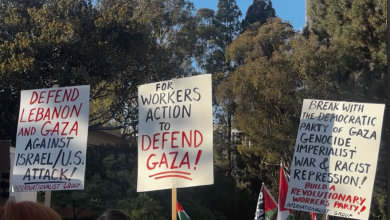Sex and Women’s Bodies: How ISIS Uses Extremist Interpretations To Use Women as Vehicles for Terrorism

Throughout the development of history and warfare, women have been both involved in terrorism and anti-terrorism efforts: from the explosions within Algiers’ street cafes during the Algerian Independence Movement to the 1993 anti-abortion murder carried out by Shelly Shannon. Thus we can confront the question of how the female body may be represented as a possible vehicle for terrorism in the form of both physically taking arms and through birth/impregnation through false Islamic legal manipulation.
With the opening of ISIS sex brothels in 2014 as well as mandated pamphlets on the usage of female victims/prisoners as means of sexual enjoyment and future bearers of offspring after forced marriage and conversion, ISIS movements have been largely abused the female body as spiritual, physical, and psychological ways of controlling women and using them as “Poster Girls”.
While some of the girls reported to have left to join ISIS have been seen with guns and severed heads, it is doubtable that women themselves were placed on the battlefields due to the extremist interpretative view of Islamic law that, in the eyes of ISIS members, mandates gender segregation to the highest capacity in ordinance with separated quarters.
Women instead were given a different task in the hyper-sexualized society within ISIS ideology: they were to be paraded, fully-covered in black, with guns and patriotic flags pledging themselves to the “Fight for God”.
In the way that ISIS members used Western colonialist enterprises that enslaved third-world countries as reasoning to terrorism, ISIS too sought to make a symbolic statement of the conquering of the blonde, blue-eyed Western European woman.
There has long been an inherent fascination of gaining not just female recruits, but also white European recruits, in order to parade what is seen as the “conquering of the West”. While ISIS used extremist Salafi legal interpretation to separate women from male quarters, it is also important to note that ISIS waived its own extremist belief that women were not to be depicted, photographed, or re-displayed due to belief that women were causes of “fitna” or “temptation”.
In this way, ISIS demonstrated an example in which leaders, and not God or holy texts or even scholars, placed decisions on what was religiously permissible and impermissible to match political agendas.
Through these actions, ISIS then demonstrates its attempt to “play God” or manipulate legal jurisprudence in manners benefitting to its leadership in dominating matters. Through the usage of extremist interpretations of Islam, ISIS combines theory with social media as means of reaching out to find more members.
This can be shown through the released report detailing the false pregnancy of the 17 year old Bosnians as means of “congratulating” the Muslim world for the new birth of a European white child within an “Islamic” State.
This may be paralleled with the recent incident in which a blonde American woman, Jennifer Williams, sarcastically placed a Twitter post regarding her conversion and desire to join “Jihad”—later to result in 12,000 retweets in the next morning with many marriage proposals to be offered.
Her photos were promptly taken, blurred, and then retagged within the ISIS social media community retelling the story of the white American woman who “came to her senses” and joined the ISIS fight in Arabic. It is clear from the tweets, commentaries, and marriage proposals that it was not her piety nor religiosity that had attracted the ISIS members: rather, it was the prospect of a white American woman.
It is for this reason that women of European and white descent are often most targeted within Western Muslim societies: the inherent appearance of being “white” and therefore, not a true Muslim gives extremist Imams and ISIS a new target who seek to gain symbolic evidence as “revenge”.
I as a Muslim American Bosnian woman can attest to not having heard a single discussion in my own life, community, and religious schooling about avoiding radicalization and, while I cannot hold all Muslims accountable for this, silence is just as bad as generalization.The least that could be done is for the discussion to young girls and children through programs about avoidance of ideologies and how to equip a child for the understanding that Islam isn’t a one-sided and cookie-cutter religion.





